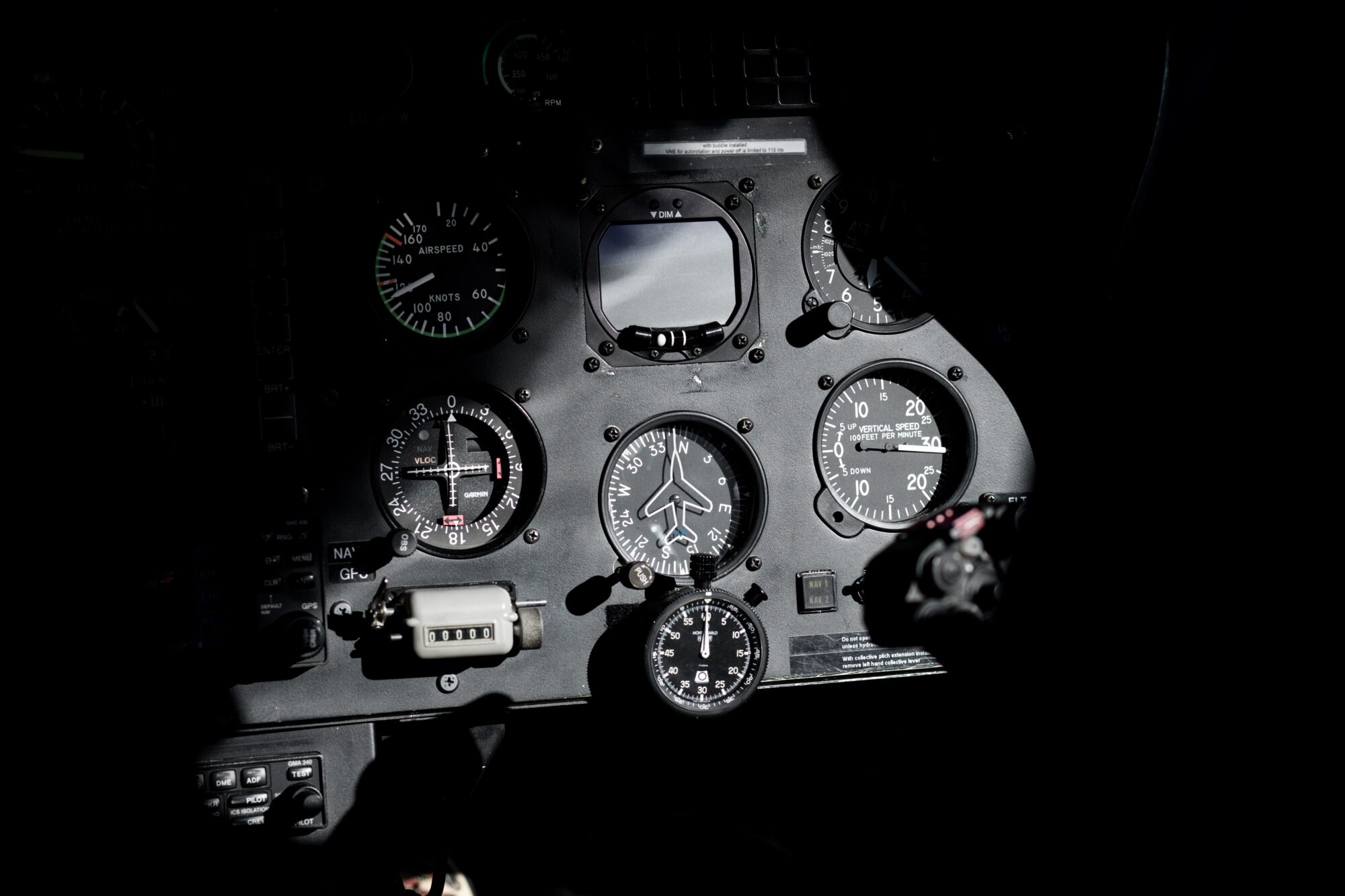In an era where technology constantly changes our world, Augmented Reality (AR) stands out as a transformative force, especially in the aviation industry. AR solutions, known for overlaying digital information on the physical world, are NO LONGER just a futuristic concept – they are practical tools revolutionizing aviation.
This article will explore how AR paves the way for more advanced aircraft, efficient production lines, and effective training methods, ultimately leading to safer skies and more remarkable journeys into space.
If you’re ready to talk about implementing AR in the process of your aviation company, try a FREE 14-day trial with AR glasses.
Revolutionizing Aircraft Design and Manufacturing
The advent of Augmented Reality (AR) in the aerospace sector has initiated a paradigm shift in how aircraft are designed and manufactured. By merging the digital and physical realms, this technology offers a new level of precision and efficiency.
Digital Twin for Better Design Precision
Integrating AR into aircraft design is revolutionizing how engineers approach the creation and development of aerospace components. This technology enables the visualization of aircraft parts and systems in a real-world context, thus significantly enhancing design precision and efficiency.
AR’s Role in Visualization
AR allows for the overlay of digital 3D models onto physical spaces, offering engineers a tangible view of how various components will interact within the aircraft. This capability is crucial in understanding spatial relationships and ergonomics, which are often challenging to grasp in traditional 2D design environments.
Improving Design Collaboration
Moreover, AR facilitates better collaboration among design teams. Engineers and designers can simultaneously view and interact with 3D models in a shared virtual space, regardless of their physical location. This collaborative approach ensures a more cohesive and integrated design process, leading to fewer errors and a more streamlined workflow.
Streamlining Manufacturing Processes
In the manufacturing phase, Augmented Reality is an invaluable tool in guiding technicians through the intricate assembly processes of aerospace components.
Enhancing Assembly Accuracy
Augmented Reality technology can project digital instructions and diagrams directly onto the work area. This guidance helps technicians to understand complex assemblies, reducing the likelihood of errors. By providing a clear, step-by-step visual guide, technicians can perform their tasks more accurately and confidently.
Increasing Efficiency and Productivity
The use of AR in manufacturing also leads to a notable increase in assembly speed. Clear, visual instructions significantly reduce the time to reference manuals or seek expert advice. This increase in efficiency accelerates the assembly process and enhances overall productivity in the manufacturing plant.
In conclusion, the application of AR in aircraft design and manufacturing marks a significant advancement in the aviation industry. By enhancing design precision and streamlining manufacturing processes, AR paves the way for more efficient, accurate, and innovative airplane production, setting new aerospace technology and operation standards.
Augmented Reality – Improving Training and Skill Development
Augmented Reality is revolutionizing the aviation industry’s training and skill development landscape. AR solutions significantly enhance professionals’ aircraft maintenance and operations training by offering interactive, digitally guided learning environments.
Interactive AR Training for Aircraft Maintenance and Operations
Augmented Reality has transformed traditional training methodologies by introducing interactive training environments, which is especially beneficial in the complex aerospace field.
Customizable Learning Experiences
AR training can be tailored to individual learning needs and skill levels. Trainees can repeatedly practice specific tasks or scenarios, ensuring they gain proficiency in areas needing more focus. This level of customization ensures a more effective and personalized training experience.
Bridging the Gap Between Theory and Practice
Augmented Reality helps bridge the gap between theoretical knowledge and practical skills. Trainees can see the direct application of theoretical concepts in a suitable, interactive format, enhancing their understanding and retention of information.
Skill Enhancement Through Real-time Feedback
The capability of AR solutions to provide immediate feedback is a game-changer in skill development.
Accelerating the Learning Curve
With real-time feedback, trainees can quickly identify and correct mistakes, accelerating learning. This immediate response is crucial in high-stakes environments like aerospace, where precision and accuracy are paramount.
Building Confidence and Competence
The feedback provided by AR systems helps build the confidence of trainees. By receiving instant validation or correction, trainees can adjust their techniques and approaches, leading to a more competent and confident workforce.
Data-Driven Insights for Continuous Improvement
Augmented Reality systems can track and analyze a trainee’s performance over time, providing valuable data-driven insights. This information can be used to identify areas for improvement, tailor future training sessions, and measure progress in a quantifiable manner.

presentation to try
Nsflow in action
Augmented Reality is a powerful tool in training and skill development within the aviation industry. By providing interactive training environments and real-time feedback, Augmented Reality technology enhances the learning experience. It ensures a more skilled, efficient, and competent workforce ready to tackle the challenges of modern aerospace operations.
Enhancing In-flight Experience and Navigation
Improved Decision-Making in Complex Scenarios
AR displays can present enhanced visual cues to assist navigation and decision-making in challenging flight conditions, such as poor visibility or congested airspace. Pilots can make more informed and quicker decisions by overlaying navigational paths, weather information, and potential hazards directly onto the cockpit view, improving overall flight safety and efficiency.
Passenger Experience and In-flight Entertainment
Augmented Reality has the potential to take in-flight entertainment to new heights by offering passengers immersive experiences. Through AR-enabled devices or screens, passengers can engage in interactive games, explore virtual landscapes, or enjoy enhanced multimedia content, making their journey more enjoyable and memorable.
Personalized Flight Information and Services
AR can provide passengers with personalized information about their flight, such as real-time progress, estimated time of arrival, and points of interest along the flight path. Such features add an educational and interactive element to the flight experience, keeping passengers informed and engaged.
Enhancing Comfort and Convenience
For instance, AR can assist passengers in finding their seats, understanding safety procedures, or even ordering food and beverages. This level of personalized service not only enhances passenger comfort but also streamlines cabin crew operations.
Maintenance and Repair: A New Dimension
Integrating Augmented Reality (AR) in aerospace’s maintenance and repair sector is bringing about a revolutionary change. This technology enhances the efficiency, accuracy, and speed of maintenance processes, significantly impacting how aircraft upkeep is performed. Documentation supported by AR glasses provides data useful during inspections.
Visualizing Internal Components and Systems
One of the most significant advantages of AR in maintenance is the ability to visualize the internal workings of aircraft components. Technicians can use AR to see through layers of the aircraft, identify parts, and understand the complex systems without physically disassembling them. This visualization aids in quickly pinpointing issues and understanding the overall structure and function of the aircraft systems.
Step-by-Step Guidance for Repairs
AR technology can provide technicians with step-by-step repair instructions overlaid directly onto the equipment. This interactive guidance system ensures that repairs are done accurately, reducing the chances of human error. It also provides an excellent tool for training novice technicians, providing real-time, hands-on experience.
Enhancing Safety and Reducing Downtime
By enabling more efficient troubleshooting and repair processes, AR helps reduce aircraft downtime, which is crucial in the high-stakes aviation industry. Additionally, this efficiency translates into enhanced safety, ensuring that maintenance tasks are performed thoroughly and correctly.

Remote Assistance and Collaboration
Augmented Reality technology’s capability for remote assistance transforms how expertise is shared and utilized in the aerospace sector.
Expert Guidance from Any Location
AR allows experts to guide onsite technicians through complex repairs from anywhere in the world. This remote assistance capability is invaluable, especially when the required expertise is unavailable onsite. Experts can see precisely what the onsite technician is seeing and provide real-time guidance and support, ensuring that the repair is carried out effectively.
Time-Saving and Access to Expertise
This remote collaboration saves significant time and ensures that high-level expertise is readily available, regardless of geographical constraints. In critical situations where time is of the essence, this immediate access to expert knowledge can be a deciding factor in successfully resolving maintenance issues.
Facilitating Global Collaboration and Training
Moreover, AR-enabled remote assistance fosters a collaborative environment where knowledge and skills can be shared globally. It allows for creating a virtual training ground where technicians from different parts of the world can learn from experts, enhancing the overall skill level within the industry.
Conclusion
Augmented Reality is not just a futuristic concept; it is a practical tool already beginning to transform the aerospace industry. AR offers unparalleled opportunities for innovation and efficiency, from design and manufacturing to training, navigation, and maintenance.
As this technology continues to evolve, it will unlock new horizons in aerospace, driving the industry towards a safer, more efficient, and more exciting future.
Nsflow: Unleashing New Possibilities for the Aviation Industry
Nsflow emerges as a groundbreaking technology with the potential to revolutionize the aviation sector. If you would like to talk about the possibilities that, thanks to AR, you can improve processes in your aviation company, try a FREE DEMO.



















